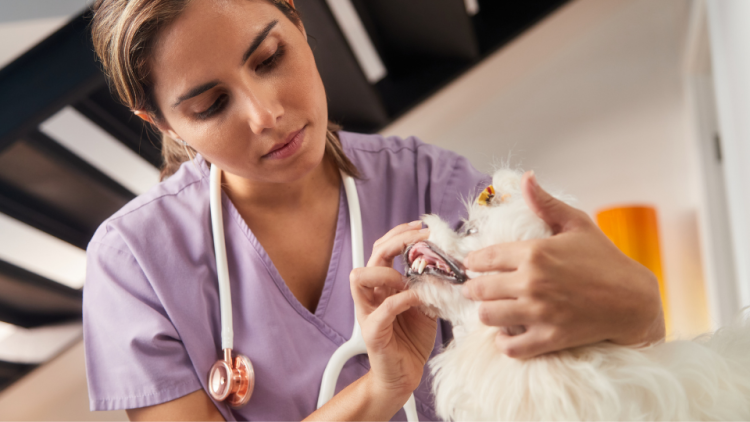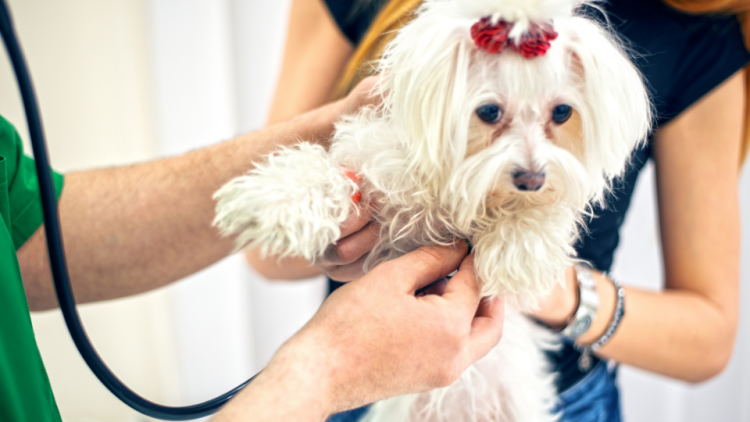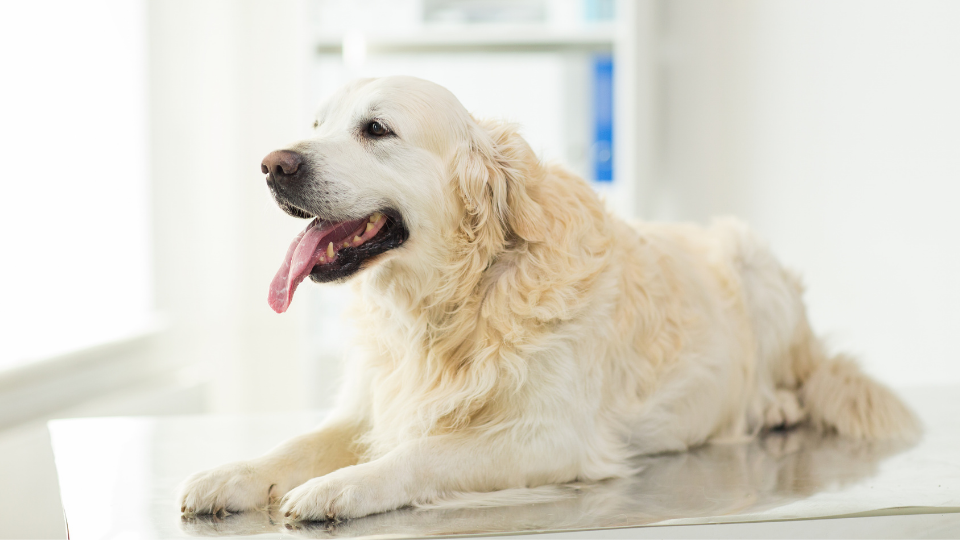As a pet owner, you want to do everything possible to maximize your pet’s quantity and quality of life. Hopefully, you’ve established a relationship with a primary care vet and followed their preventive pet care recommendations. It may be tempting to skip your annual vet appointment if no vaccinations are due, especially if your pet gets easily stressed at the vet’s office, but a yearly wellness exam is an essential part of keeping your pet healthy.
Are Pet Wellness Plans Worth It?
Pets are exceptionally good at hiding early signs of illness, so it can be difficult for their human family members to detect some diseases when they are most treatable. An annual pet check enables your veterinarian to assess your pet for subtle signs of illness and pain that may not be detectable at home. The information gained from the wellness exam allows vets to make specific recommendations for diagnostic tests, diet, activity, and medications or supplements to maximize your pet’s health.
Read on to learn more about what your veterinarian is looking for in each part of your pet’s annual examination.
Here’s what to expect during a wellness exam vet appointment:
- What does a pet wellness exam consist of?
- Why are wellness exams important for pets?
- How much is a vet check-up?
- Key Takeaways
What does a pet wellness exam consist of?
Visual & Physical Exam Checklist
The wellness exam starts before your vet ever touches your pet. He or she will observe how your pet moves around the exam room, checking for stiffness or lameness (which can be signs of musculoskeletal pain) and ataxia, or being off-balance (which can be a sign of some neurologic conditions).
Additionally, some diseases can alter your pet’s appearance. A classic example of this is Cushing’s Syndrome, which can lead to a pot-bellied appearance and poor hair coat in your dog. Your vet will follow a physical exam checklist for dogs to make a visual assessment of their:
- Haircoat
- Weight, or body condition score
- Musculature
- Symmetry of eyes, ears, and limbs
- How they hold their head
- Breathing pattern
- Energy level
Your vet will further assess areas on the dog physical exam checklist throughout the remaining visit. This initial visual portion of the vet check is often over in under a minute, and you may not even be aware it is happening.
Behavioral Analysis
During this time, the vet will also assess your pet's behavior and demeanor in the exam room to determine the best way to handle your cat or dog during the exam. Some pets enjoy going to the vet while others will display body language indicating fear or aggression. Sometimes, your veterinarian may recommend placing a muzzle over your pet's mouth for protection during the examination.
If your pet is protective of you, your veterinarian may suggest you step out of the room or that they examine your pet in the treatment area. This is to ensure safety for your pet and the veterinary team. Many pets who are owner-protective happily interact with the vet team once they are away from their owner and no longer feel the need to be protective.
If your pet is extremely fearful or aggressive (which is often driven by fear), your vet may recommend rescheduling the appointment and prescribe an oral sedative such as trazodone or gabapentin to use before your next visit. This is done both for safety and to reduce the stress and fear your pet is experiencing.
Changes in Weight
Your pet’s weight is recorded at each vet appointment and changes, both increases and decreases, will be discussed. Be sure to let your veterinarian know if you have intentionally been trying to get your pet to lose or gain weight.
Obesity is common in the United States pet population and increases the risk of joint disease, diabetes, and other secondary health issues. It also has been shown to shorten the lifespan of pets. If your pet is overweight or gaining weight in an unhealthy way, your veterinarian will discuss strategies for weight loss. Weight gain or inability to lose weight can also be a sign of metabolic disease, such as hypothyroidism in dogs.
Weight loss can also be an indicator of internal disease, such as kidney disease, diabetes, hyperthyroidism, and even cancer. Sometimes, weight loss occurs due to muscle loss in older pets. If weight loss is noted, especially if it is combined with changes in appetite, thirst, urination, or energy levels, your veterinarian will probably recommend additional testing.
Oral Examination
Many veterinarians will start their examination by assessing your pet’s gums. The gums help to assess overall health status based on color and moisture. Abnormal gum color can suggest anemia (low red blood cells), liver disease, or problems in the respiratory or circulatory systems. Dry, tacky gums suggest dehydration, which can be another sign of disease.
Your pet’s mouth will then be evaluated for signs of periodontal (gum) disease and tooth abnormalities. Periodontal disease is present in over 80% of dogs according to the American Veterinary Medical Association and can lead to bad breath (halitosis), pain, and infection.
The bacteria load in the mouth can also affect other organs. It’s important to know that even patients with severe disease may not show any change in appetite or their ability to eat dry food, so an annual oral examination is important to detect dental diseases.
Evidence of periodontal disease includes:
- plaque, tartar, and calculus build-up on teeth
- gingivitis (red, inflamed gums)
- loose or missing teeth
- areas where deeper areas of the teeth such as roots or furcations (where two roots meet for multi-rooted teeth) show, indicating loss of normal gum tissue.
In addition to evidence of periodontal disease, your vet will also check your pet’s mouth for:
- Fractured or broken teeth, which often occur from chewing or biting hard objects and can be painful if the sensitive inner pulp is exposed
- Worn teeth, which occur from repetitive chewing on objects like toys, balls, and Frisbees, but occurs slowly over time and often does not expose the pulp cavity
- Retained deciduous (baby) teeth, which are more common in small breed dogs
- Resorptive lesions, which occur in up to 60% of cats and appear as a pink hole or overall change in the normal shape of a tooth or gum line. These lesions can cause tooth loss and can become painful if left untreated.
- Pain or abnormalities in your pet’s ability to open or close their mouth
- Ulcers, growths, and inflammation of the cheeks, lips, tongue, palate, or other soft tissue structures of the mouth.

If any of these are present, your vet will likely recommend an anesthetic dental cleaning. This is a separate procedure that will allow your vet to fully assess all teeth and take x-rays to look at the entire tooth structure and check below the gumline for additional disease. If your pet's periodontal disease is severe or there are abnormal teeth present, he or she may need to have some teeth removed during the procedure. It is usually not possible to fully determine the best treatment options for a tooth without anesthesia and dental x-rays.
Examination of the Head and Neck
From a distance, your veterinarian will check for any abnormalities in the symmetry of your pet’s face, which could indicate swelling, growths, or nerve abnormalities. Then they will more closely evaluate the ears with an otoscope and eyes with an ophthalmoscope.
Eyes
When examining the eyes, your veterinarian will check for signs of disease that can cause discomfort or affect vision. Discharge can be a sign of mild irritation, conjunctivitis, or more serious conditions such as dry eye and corneal ulcers. Your veterinarian will use an ophthalmoscope to closely examine the eyelids and all of the structures of the eye, including the cornea, sclera (whites of the eye), pupils, interior of the eye, and retina for abnormalities.
Any abnormalities that might affect your pet’s comfort or vision will be discussed. Cataracts are a common problem in older pets that can affect vision and may be noticed by the owner at home. Changes in the retina can only be seen with an ophthalmoscope and may indicate hypertension, or high blood pressure, which can cause blindness and damage to other organs.
Based on the physical examination findings, your veterinarian may recommend additional tests on your pet’s eye to assess tear production, check for ulcers, and check the pressure in your pet’s eye to screen for inflammation and glaucoma.
Ears
Your pet’s ears will be assessed for discharge, inflammation, and swelling in the ear canals, which can indicate infection or the presence of ear mites. The ear canal will also be checked for abnormal growths. In a healthy ear, your veterinarian should be able to view the eardrum (or tympanic membrane). It is difficult to assess hearing in pets, but if you have concerns about your pet’s hearing, let your veterinarian know.
Neck
Finally, your vet will evaluate several structures in your pet’s neck. There are lymph nodes located under your pet’s jaw and in front of their shoulder blades, as well as other places in the body. Enlargement of these nodes can suggest infection, inflammation, or lymphoma, a type of cancer. The thyroid gland is not usually large enough to be palpated, except in some cases of hyperthyroidism, a common disease of older cats.
Auscultation
Your veterinarian will listen to your pet's heart and lungs with a stethoscope. This is a very important part of the exam since most pets won't show external signs of heart problems in early stages of disease.
Your veterinarian will record your pet’s heart and respiratory rate and listen for any changes in the sounds of your pet’ heart or lungs, including:
- A heart murmur, which indicates changes in blood flow through the heart. There are many different causes of a murmur, and they differ for dogs and cats.
- An arrhythmia, or abnormal heart rhythm, which can be a sign of disease in the heart or elsewhere in the body. Some breeds, such as Boxers, are predisposed to arrhythmias.
- Crackles, which are a lung sound that indicate fluid accumulation that can be heard with heart failure, pneumonia, and other pulmonary diseases.
- Wheezing, which can be a sign of asthma, a lung disease seen in cats, or other allergic airway disease.
If any abnormalities are heard during the exam, your vet may recommend an electrocardiogram (ECG), x-rays, or other testing to assess your pet's heart and lungs. They may also recommend referral to a cardiologist for an echocardiogram, or full cardiac ultrasound.

Abdominal Palpation
Next, your vet will palpate your pet’s abdomen, checking for pain, fluid accumulation, or changes in organ size. It is important to know that in obese or very large pets (such as giant breed dogs), it can be difficult to palpate all areas of the abdomen, but important information can still be gained.
Pain can be a sign of discomfort in the abdomen itself or from another area in the body, such as the back, which is common in breeds with long spines, such as Dachshunds.
Fluid can accumulate in the abdomen for many reasons including bleeding, infection, liver disease, heart disease, and low blood protein levels. Small volumes of fluid are difficult to detect on palpation, but larger amounts can lead to visible abdominal bloating or changes in the feel of the abdomen. Any fluid accumulation is a sign of significant disease that should be investigated further.
Changes in organ size can suggest a variety of abnormalities. Enlarged organs can suggest tumors, which may be benign or malignant, or swelling. Alternatively, organs that have decreased in size, such as the kidneys, can suggest organ dysfunction or failure. These can be investigated further with bloodwork, x-rays, and ultrasound.
Assessment of Skin and Haircoat
As a pet owner, you are likely to notice changes in your dog or cat’s skin and haircoat fairly quickly. If you've noticed new lumps or changes in old ones, bring them to your vet's attention at the beginning of the examination. Your vet will document the size and location of all lumps and may find some you haven’t found at home.
Lumps that have been present previously will be rechecked and assessed for changes. It is not possible to diagnose the type of lump by feel alone, so your vet may recommend a fine needle aspirate to investigate further.
If your pet is itching excessively or losing fur, let your veterinarian know. This can be a sign of parasites, such as fleas or skin mites, allergies, or infection. Your veterinarian will closely evaluate the skin for signs of these disease processes. The skin and hair coat can also increase a suspicion of metabolic diseases such as hypothyroidism and Cushing’s syndrome.
Orthopedic and Neurologic Assessment
Finally, your vet will check your pet’s legs, back, and neck for signs of discomfort, joint disease, and neurologic dysfunction. Some breeds are predisposed to joint diseases like hip dysplasia in German Shepherd dogs, Labrador Retrievers, and others. The way your pet moves around the clinic as well as the way the joint feels can increase suspicion of this disease and other joint problems, such as luxating patellas or osteoarthritis.
While many neurologic diseases, such as seizure disorders or vestibular disease, are observed first at home, some diseases that affect mobility to the back legs, such as intervertebral disc disease (IVDD) and degenerative myelopathy, can be suspected based on physical examination based on how your pet lifts their hind feet when walking and standing.
Why are wellness exams important for pets?
While a single physical examination can provide a lot of important information about your pet's health, tracking findings and changes overtime is even more valuable. By having an examination performed at least once a year on your pet, you increase the chances that subtle changes will be detected. That’s why it’s crucial to schedule annual vet check-ups, even if you think your pet is perfectly healthy. Some veterinarians recommend geriatric screening for senior pets every six months, since pets age faster than we do as humans.
Physical exams do have limitations. A veterinarian’s hands cannot tell them how a pet’s organs are functioning. This is why your veterinarian may recommend bloodwork to assess organ function in older pets even with a normal examination. As discussed above, diagnostics are recommended for pets with abnormalities on their exam.
How much is a vet check-up?
A vet check-up costs between $50 and $70 on average. Most practices charge the same for wellness exams as they do for general office visits, however, prices increase with recommended testing, which makes senior pet checks typically more expensive.
The cost of a vet check-up also varies based on where you live. Generally, veterinary services on the West Coast are a bit more expensive than the East Coast, which are both significantly higher than prices in less-populated areas of the country, like the Mid West.
For example, a canine health check at a vet in San Diego costs about $73. The same dog check-up costs approximately $55 in Lincoln, NE, where you can find some of the lowest vet prices for dogs in the U.S.
In comparison, the cat check-up cost at vets in New York City is about $77, while the same office visit runs about $52 in Oklahoma City.
Investing in pet insurance can help to provide a financial safety net if abnormalities are found on your pet's examination and additional diagnostics are recommended. Pet insurance can reimburse you for up to 90% of your total bill.
Some providers offer pet wellness plans as add-ons that will also cover your annual examination and routine screening tests. By investing in pet insurance, you can have the peace of mind that any abnormalities found on your pet's annual examination can be diagnosed and treated appropriately.
Key Takeaways
- Your pet should have a physical examination at least once a year as part of their preventive care.
- During the examination, your vet will look for signs of illness and pain that your pet may be hiding on a daily basis.
- Based on the physical examination findings, your veterinarian may recommend additional testing to investigate the causes of abnormalities or procedures to treat disease, such as a dental cleaning.
- Pet insurance can help to cover the costs of recommended testing and procedures to maximize your pet’s health.
